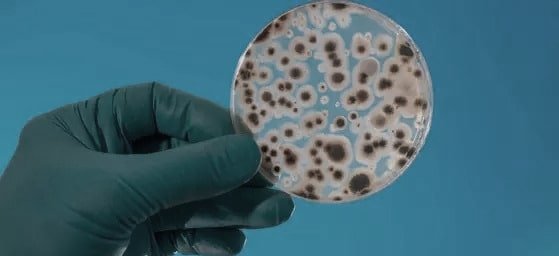
Slimicides are chemical agents or compounds that are used to control or prevent the growth of slime-forming microorganisms in industrial processes or water systems.
These microorganisms can include bacteria, fungi, and algae, and they can form slime or biofilms that can lead to blockages in pipes and equipment, reduce water flow, and promote corrosion. Slimicides are typically added to cooling towers, water treatment plants, and other industrial systems to prevent the growth of slime-forming organisms and ensure the smooth functioning of the system.
There are several types of slimicides:
In cooling towers, water treatment systems, pulp and paper mills, and other industrial applications, slimicides prevent or control slime-forming microorganism growth.
These types of slimicides work by oxidizing the slime-forming microorganisms, breaking down their cell walls and killing them. Examples of oxidizing slimicides include chlorine, bromine, and hydrogen peroxide.
It inhibits the growth and reproduction of slime-forming microorganisms by disrupting their metabolic processes. Non-oxidizing slimicides include quaternary ammonium compounds, isothiazolinones, and glutaraldehyde.
These types of slimicides work by breaking down the biofilm that forms on surfaces and provides a protective environment for slime-forming microorganisms. Examples of biofilm disruptors include enzymes and chelating agents.
These types of slimicides work by releasing metal ions into the water, which can be toxic to the slime-forming microorganisms. Examples of metal ions used as slimicides include copper, silver, and zinc.
The selection of a slimicide depends on various factors, such as the type of microorganisms present, the system’s operating conditions, and the environmental regulations governing the use of slimicides.
Fungicides can be used in the following ways:
01
Determine the appropriate slimicideSlimicides come in different types, and the type in which you choose will depend on what the application is, what type of microorganisms you are dealing with, and other variables.
02
Consult the manufacturerSlimicides should always be used according to the manufacturer’s instructions, which will specify the appropriate dosage, method of application, and safety precautions.
03
Test the water or systemBefore applying a slimicide, it is important to test the water or system to determine the extent of microbial growth and to establish a baseline for monitoring its effectiveness.
04
Apply the slimicideIt can be applied in various ways, such as through manual dosing, automated dosing systems, or continuous injection. The slimicide type and treatment system determine the method.
05
Monitor the systemMonitoring is essential to detect adverse effects and ensure the slimicide is working properly. Water or system testing and visual inspections may be necessary.
06
Follow safety proceduresIt can be hazardous if not used correctly, so it is important to follow all safety procedures, such as wearing protective equipment and disposing of any unused or expired slimicide properly.
07
Take corrective action if necessaryA slimicide may need to be adjusted or a different slimicide applied if microbial growth persists or increases after use. Working with a qualified professional is essential.
Water treatment : Slimicides are used in water treatment plants to prevent biofilm growth. Slimicides keep water flowing and prevent the buildup of harmful bacteria caused by biofilms.Agriculture : Slimicides can be used in agriculture to prevent the growth of biofilms on irrigation equipment and other machinery. Soil health is improved and disease risk is reduced.Food processing : Food processors use slimicides to prevent biofilms from growing on equipment and in processing areas. Foodborne illnesses can be reduced by preventing contamination.Industrial settings : Various industrial settings, such as pulp and paper mills, can use slimicides to prevent biofilm from growing. By doing so, you can improve efficiency and prevent bacteria buildup.

Here are some additional points to know about slimicides:

- Chemical slimicides are used in water treatment, food processing, oil and gas production, etc., to control or prevent slimy biofilms. In contact with water or other liquids, bacteria, algae, and fungi form slimy biofilms on surfaces.
- The use of slimicides is important because slimy biofilms can cause various problems, such as reduced process efficiency, increased energy costs, equipment damage, and contamination of end products.
- The choice of slimicide and its application depends on the specific application and the types of microorganisms present. It is important to use slimicides in accordance with recommended guidelines to ensure safe and effective use.